Partition walls have become commonplace across Singapore as a way to personalise the open concept design that most HDB flats share.

November 4th, 2022
A partition wall is a dividing wall which creates two defined spaces. Partition walls do not support any of the building’s weight and can be removed or erected without changing the structural layout of an apartment. They can be made from just about any sturdy building material, but the most common partition wall types are glass, brick and timber.
Room dividers as a practice are very common in Singapore. This is likely due to the fact that the majority of HDB homes are now open concept, so partitioning off areas of the flat gives homeowners more control over their home layout. However, sectioning off rooms is far from a modern practice – in fact, the earliest discovered folding screens date back to 7th century China.
Wall partitions have a lot of utility in modern Singaporean homes. Creating a defined private space inside a larger shared space is equivalent to building your own personal oasis. There are a number of uses for rooms separated by the partition, but the most common usage is for a private study – especially given the popularity of working from home post-pandemic. Other uses for partition rooms include a children’s play area, movie and/or theatre room, laundry room, art/music room, and even a walk-in wardrobe.
All things considered, partition walls are fairly affordable for renovations. The price range for a partition wall is usually somewhere between $580-$7,6000 depending on the partition wall material and complexity of the job. This is because they do not have any structural responsibilities and are therefore much easier to erect or remove.
Partition walls have a lot of design potential when styled effectively. The sheer volume of designs and materials that can make choosing the right one feel daunting. To help inspire your own partition wall ideas, here is a list of the beset partition room dividers currently included in homes across Singapore.

One simple wall separator idea that won’t break the bank is purchasing portable wall dividers or screens. You can fold down these screens and place them in another room when they aren’t needed, which will free up the space once more. This gives you an easy and impermanent way to section off parts of your room whenever needed. For more information, read about the top 5 room divider ideas in Singapore.
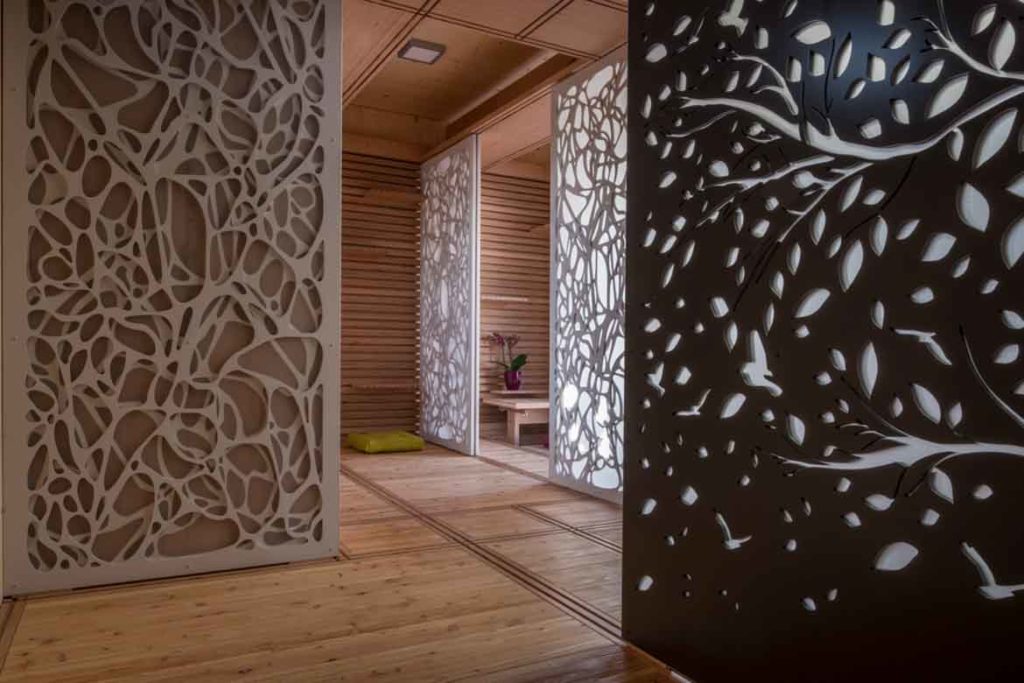
MDF stands for Medium Density Fibreboard, which is a composite wood product that is often used for interior decorating purposes. Medium Denisty Fibreboard comes in a variety of textures, patterns and finishes which gives homeowners a wealth of options when it comes to their partition boards.
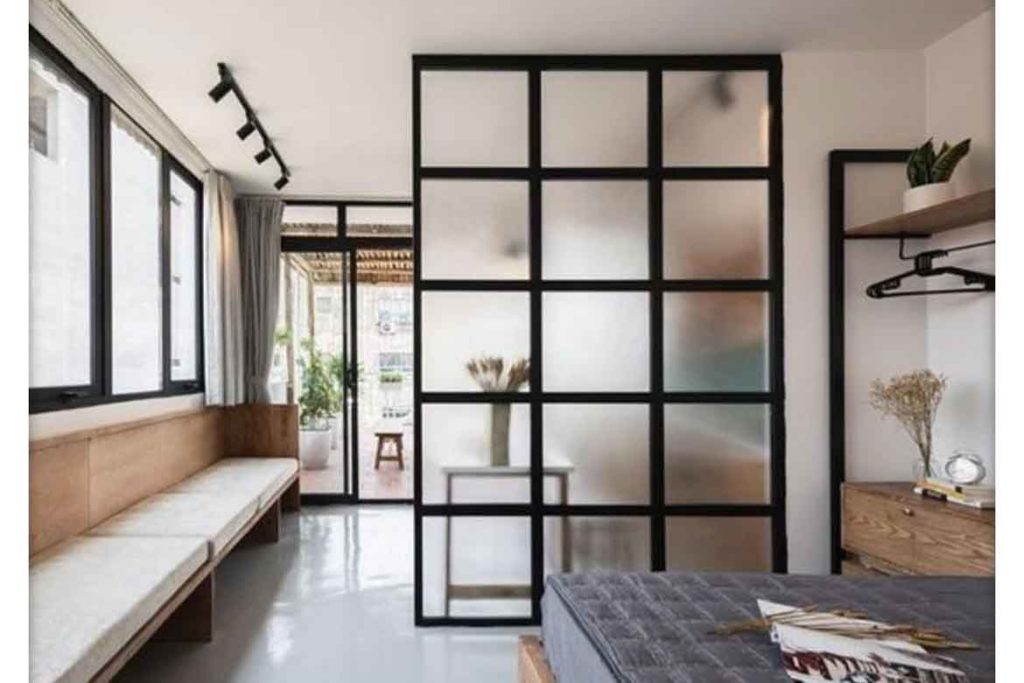
Defining your office space is one of the key factors in building a successful working from home environment. Failure to separate work spaces from leisure spaces can lead to you feeling stressed and unable to leave work behind when it’s time to clock off. As such, an office partition is a great idea to separate the two halves of your life. The wall pictured above even has frosted glass for an extra measure of separation. Out of sight, out of mind!

One of the downsides of open concept design is that cooking smells will undoubtedly float all through the house – which might be nice when you’re hungry, but will quickly become annoying (especially if you’re prone to burning your food). Installing a kitchen partition wall can help you to take control of your kitchen space and keep it separate from the rest of the house. You can even use a wet and dry kitchen system if you decide that kitchen organisation is important to you.
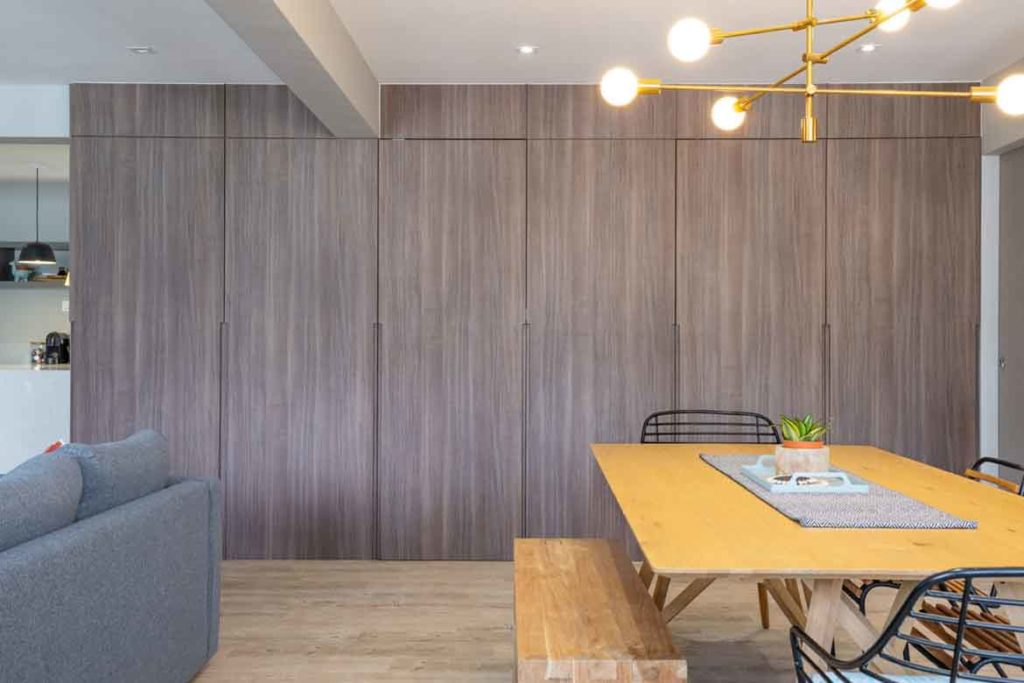
For a more unique look, you could consider installing a false wall rather than an obvious divider. This will have all of the appearance of a normal wall and can completely change the layout of your apartment.
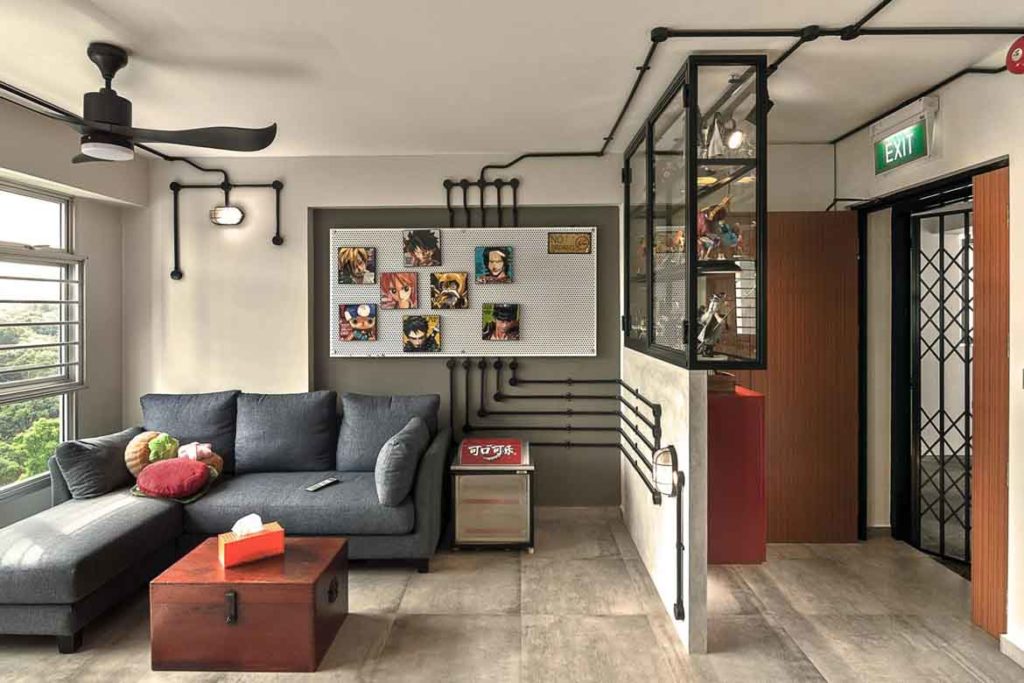
A partition can be a great way to greet your guests at the entrance of your home. This partition wall by Swiss Interiors helps to create private living room space which will guide guests into the flat.
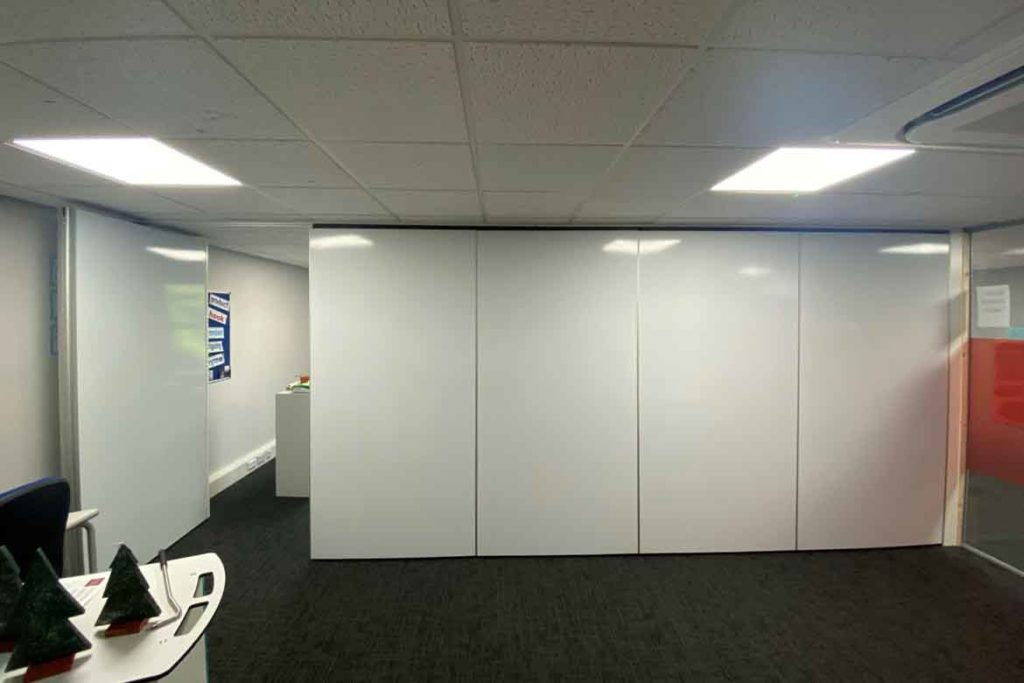
Installing a temporary partition wall in an office space will allow you to reimagine the area at will. This gives extreme flexibility for your workers, allowing for a greater sense of privacy and freedom. They are usually made from lightweight dry wall partitions.

HDB partition walls are usually an okay project to DIY. Since they are not load bearing, the only thing you really need to worry about is making sure they will look the way that you want. However, check out our HDB renovation guidelines to be safe.
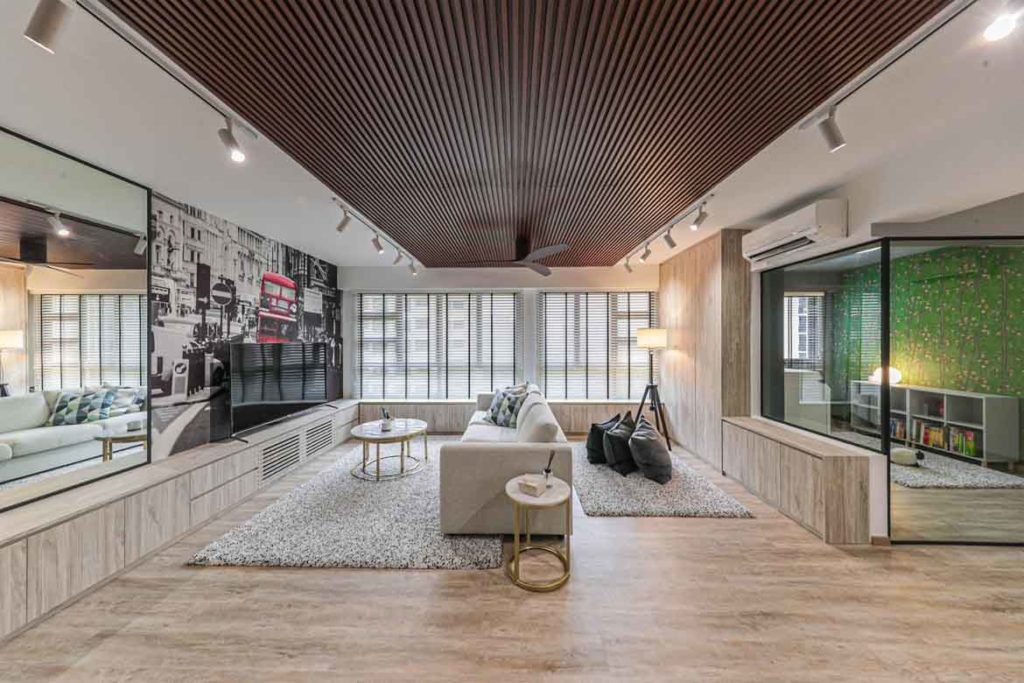
Having multiple partitions in the one room creates a sense of structure reminiscent of cubism design. It is a great way to give your apartment a little edge and can help you maintain order within the house.
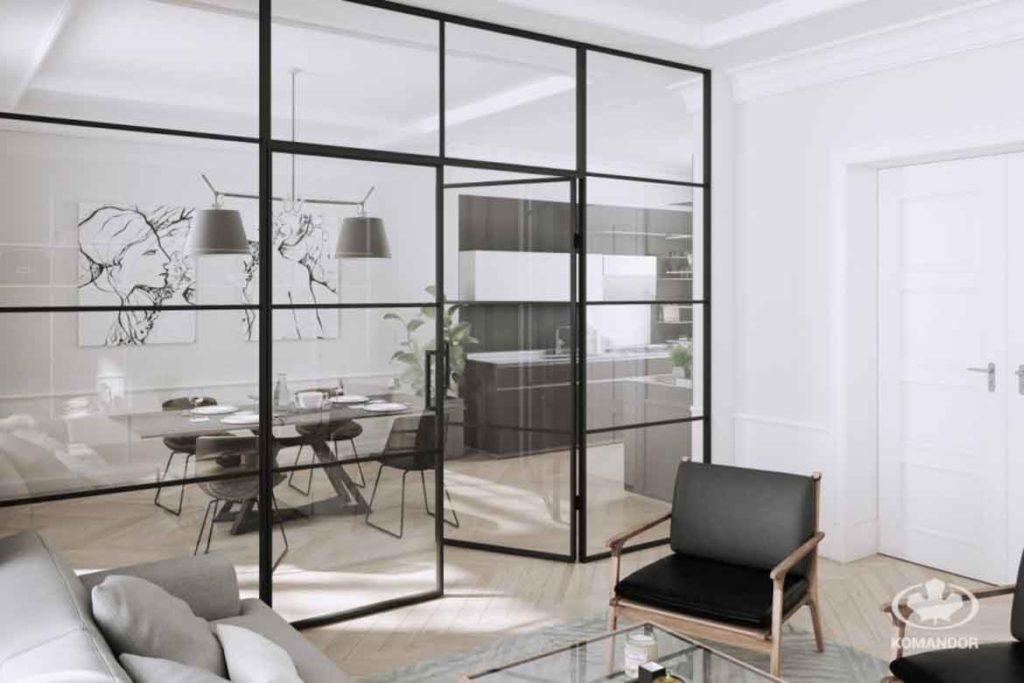
Another idea for living room design is to separate the living and dining areas. This can help you to wind down more effectively in the living room space, as well as promote healthier eating habits (rather than eating while watching television).

Sliding partitions give you extreme flexibility over your home layout without sacrificing any of the aesthetic. Take a look at more designs by Carousell Singapore for inspiration.
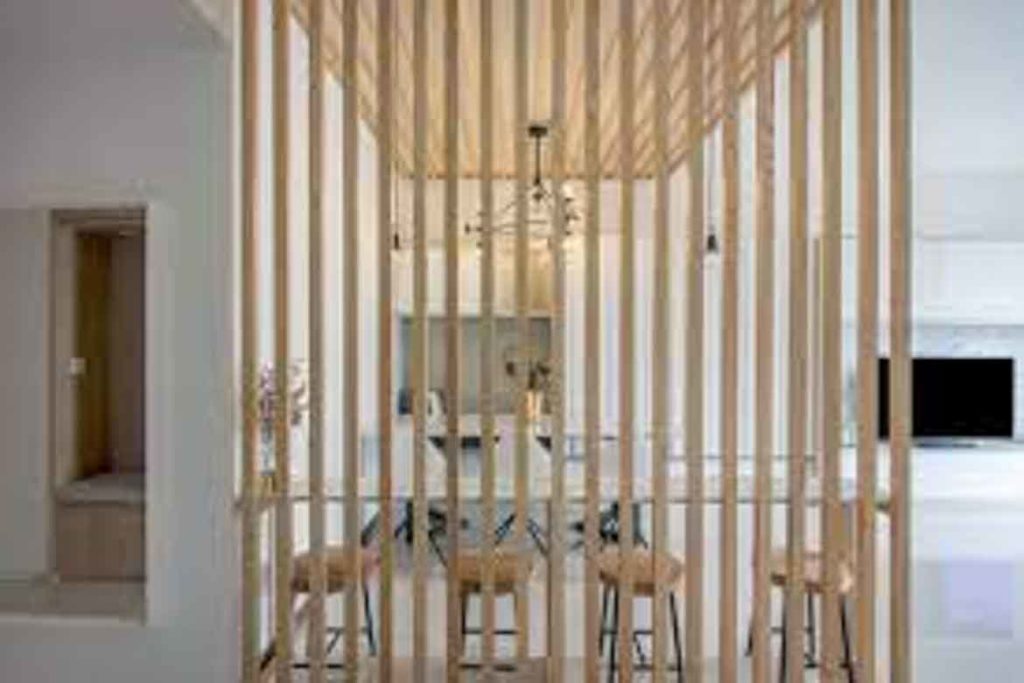
Timber partitions are popular for the chic sophistication and warmth they can bring into a room. A partial room divider like the one pictured above takes advantage of timber’s aesthetic value while still allowing for light to pass through the separated slats, keeping the room bright and open.

The beauty of a glass partition speaks for itself. They are a highly sophisticated design choice which will remain timeless and elegant for as long as you have them standing.
INDESIGN is on instagram
Follow @indesignlive
A searchable and comprehensive guide for specifying leading products and their suppliers
Keep up to date with the latest and greatest from our industry BFF's!

Elevate any space with statement lighting to illuminate and inspire.

Within the intimate confines of compact living, where space is at a premium, efficiency is critical and dining out often trumps home cooking, Gaggenau’s 400 Series Culinary Drawer proves that limited space can, in fact, unlock unlimited culinary possibilities.

To honour Chef James Won’s appointment as Gaggenau’s first Malaysian Culinary Partner, we asked the gastronomic luminaire about parallels between Gaggenau’s ethos and his own practice, his multidimensional vision of Modern Malaysian – and how his early experiences of KFC’s accessible, bold flavours influenced his concept of fine dining.

In design, the concept of absence is particularly powerful – it’s the abundant potential of deliberate non-presence that amplifies the impact of what is. And it is this realm of sophisticated subtraction that Gaggenau’s Dishwasher 400 Series so generously – and quietly – occupies.
Good things come in small packages, as Ola Bednarczuk finds out in the Darlinghurst precinct.
Design:Made:Trade Applications Design:Made:Trade showcases Australia’s unique design culture, featuring small manufacturers, product designers and design makers. It is a boutique event, specifically created for designers seeking collaboration with manufacturers, retailers and export buyers. The fair presents designers from a diverse range of backgrounds and expertise including furniture, industrial, textiles, graphic, fashion, custom and hand-made objects. […]
The internet never sleeps! Here's the stuff you might have missed

Habitus and Indesign are teaming up with iGuzzini for a very special event at Milan Design Week 2025 – and it’s time to reveal the esteemed guests who will be joining us!

In this exclusive interview for SpeakingOut!, Ross Gardam shares insights into his design philosophy, the making of his award-winning Méne light, and the evolving landscape of sustainable craftsmanship.